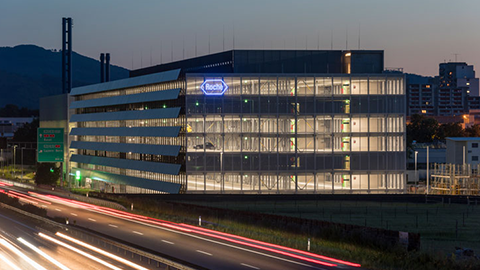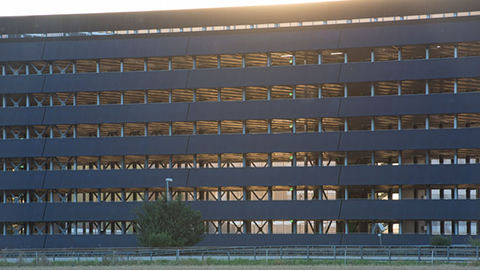
Photovoltaics at Roche in Kaiseraugst: a shining example of sustainability
Drought in December, rainy days in May and June – anyone living in the Basel region is aware that climate change is happening where they live. A minimal environmental footprint and sustainable lifestyles and business operations are now imperative.
In 2010 Roche accordingly set Group-wide energy targets for 2020. At all sites throughout the world, the objective is to increase the proportion of sustainable energy sources by 20 percent, and to reduce energy consumption and pollution per employee by the same amount. Five years have passed since then, and we are at the half-way point. We asked Udo Bäckert, Head of Technical Services at Group headquarters in Basel & Kaiseraugst, about progress towards the implementation of these targets. "We have achieved our interim targets for 2015 on energy saving and phasing out refrigerants that can damage the ozone layer," he told us, "and all the preparations for the second stage ending in 2020 have been made." In Kaiseraugst the use of refrigerants, specifically, has been slashed from 5,600 kilogrammes to 60 – and it will fall by another 30 kilos or so by the end of 2017.
Local support through global expansion

Progress at the site is not only verified internally, Bäckert emphasises, it is also very important to Roche affiliates abroad. "The Group headquarter is large, and the many functions present here – research, development, production and administration – make it highly complex," says Bäckert. "Our job is to serve as a role model, implementing technically innovative, efficient and cost-effective solutions and demonstrating them to the affiliates."
To achieve this, local conditions in Basel and Kaiseraugst are exploited to the full. "In Basel, for example, we use waste heat from production for heating, and in summer we use ground water to help with cooling. In Kaiseraugst we generate electricity using photovoltaics, as we have larger roof areas there and the site has less shade than Basel," Bäckert tells us. The special thing about the Group headquarters is that they consist of two sites that work together closely.
Roche has been based in Basel since the company was founded in 1896, and in the 1970s the first departments were moved to the nearby town of Kaiseraugst in the canton of Aargau. While Basel is home to the administration and research activities, the staff at Kaiseraugst take care of production, packaging and shipping of Roche medicines. Customers in over 130 countries are supplied from the cold store in Kaiseraugst.
Sustainable electricity produced in-house
If you travel to Kaiseraugst by car, you will be able see the shiny photovoltaic array on the new car park building from quite a distance away. Occupying an area half the size of a football pitch, it would generate enough electricity every year to power around 100 family homes. But it's by no means unique on the site. There are already three others, which could currently generate enough energy for around 70 Swiss households. Another ten installations will be built in the next few years that will generate sufficient power for around 350 more households. They will all supply electrical power to the site.
"We use much more electricity in summer than in winter," says Daniel Freuler, Head of Energy Facilities and Workshops at Kaiseraugst, "to cool the production facilities, the cold store and the new office buildings. And we get it from solar energy." Together with colleagues from Site Engineering, his team is the driving force behind the use of solar energy.

"The solar array on the multi-storey car park doesn't just generate electricity," Freuler explains. "It also protects people in the building from motorway noise, and the drivers using the motorway from glare." It's an innovative approach, and an important step towards the full implementation of energy targets in Kaiseraugst – as well as an effort to make operations sustainable. Udo Bäckert emphasises this too: “The new Swiss legislation requires companies to generate a certain quantity of electricity sustainably and independently in future. By using photovoltaics, Kaiseraugst already meets this requirement.”


